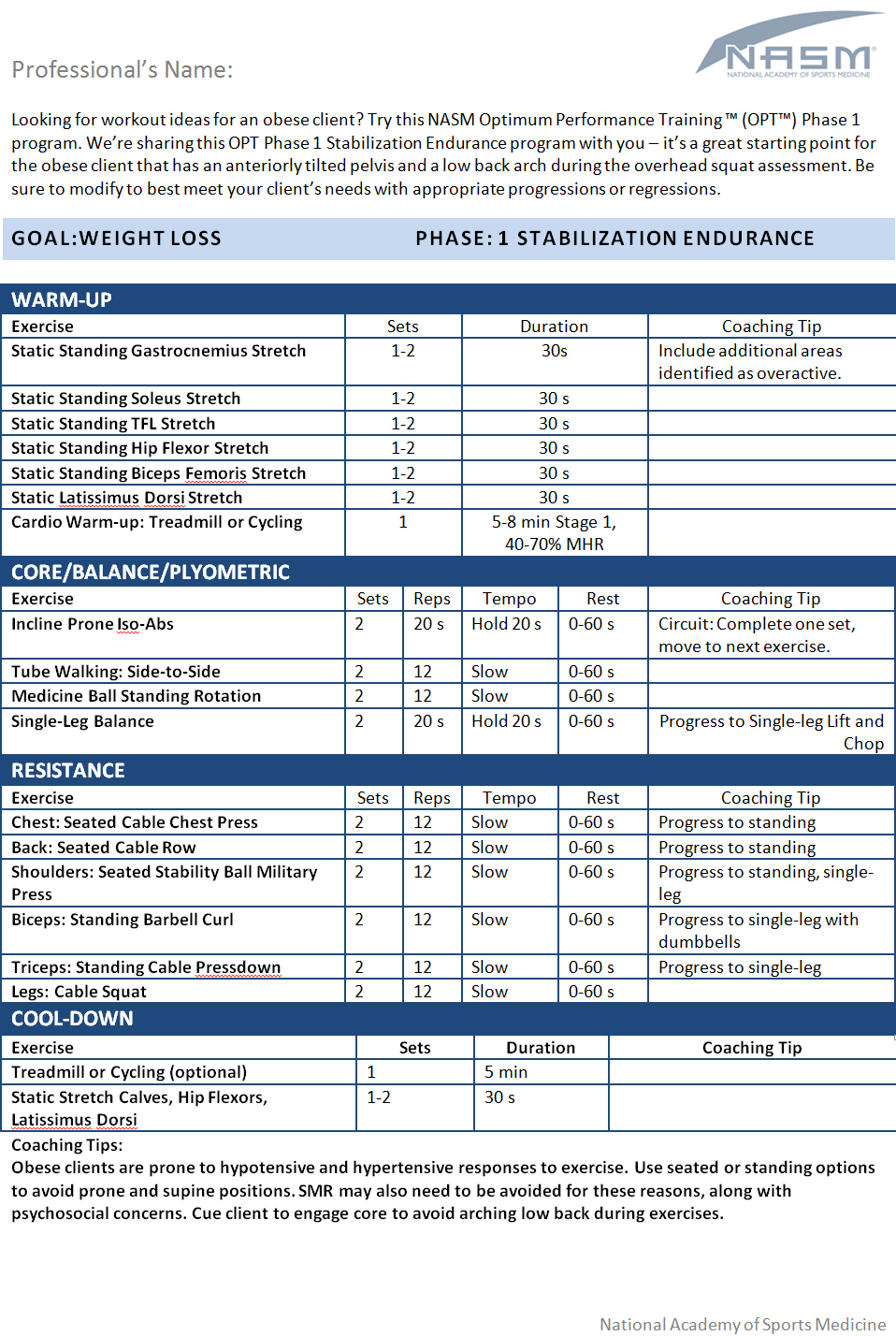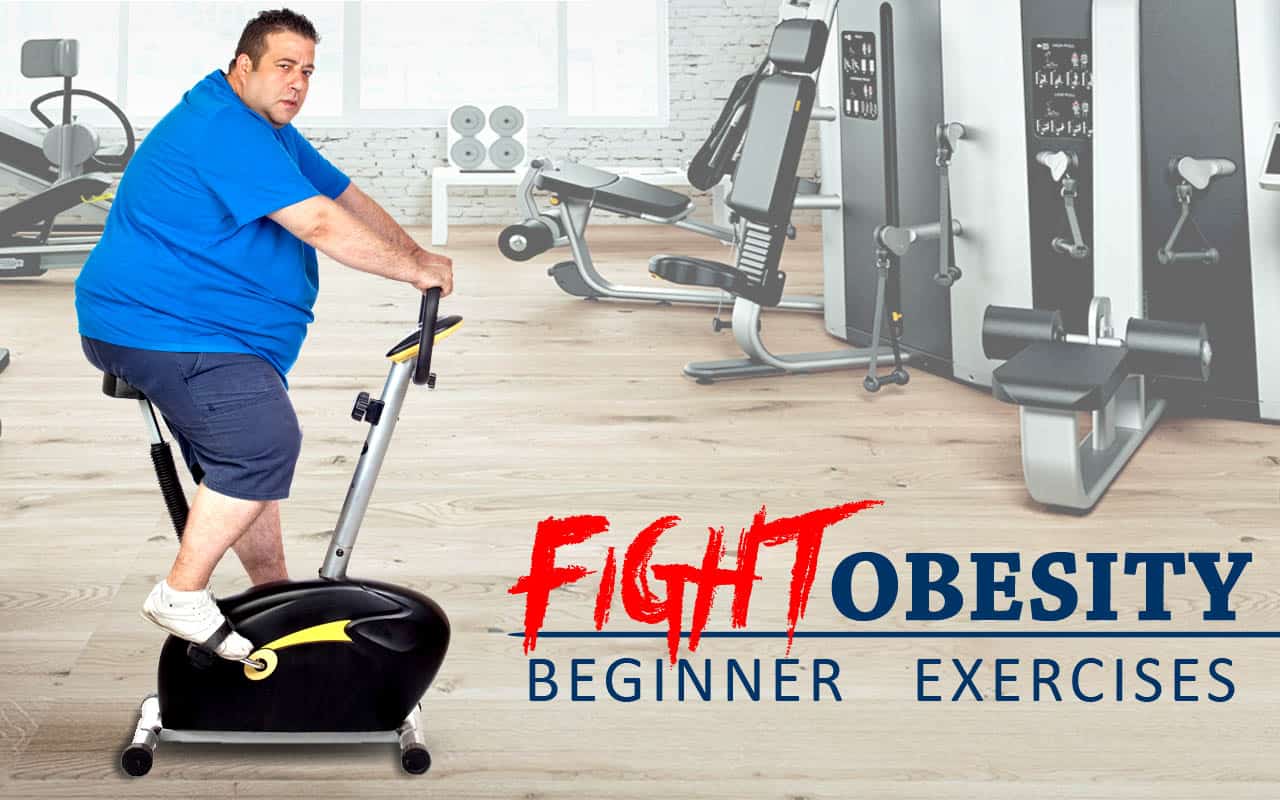If you’re dealing with obesity, starting a workout routine might feel overwhelming. But here’s the good news: with the right approach, you can build a plan that fits your body and lifestyle, helping you move more comfortably and confidently.
Imagine a workout schedule that balances strength training, cardio, and rest in a way that’s simple to follow and effective for your goals. Whether you’re just beginning or looking to improve your routine, understanding how to combine exercises like squats, walking, or swimming can make a big difference.
Ready to discover a clear, manageable path to get active and support your health? Keep reading to learn how an obesity workout plan can help you take control, stay motivated, and see real progress.
Weekly Workout Schedule
Creating a weekly workout schedule helps organize your fitness routine effectively. It balances different exercise types for better results. A good plan includes strength training, cardio, and recovery days. This mix improves overall health and supports weight loss. Following a clear schedule keeps motivation high and prevents burnout.
Strength Training Days
Choose three days for strength training each week. Focus on full-body workouts with three exercises per session. Examples are squats, push-ups, and lunges. Perform three sets of each exercise to build muscle. Complete the circuit three times for a complete workout. This method saves time and boosts metabolism.
Cardio Days
Set aside three days for cardio activities. Walking, cycling, or swimming are great options. Aim for at least 30 minutes each session. Cardio helps burn calories and improves heart health. Vary your workouts to keep them interesting. Consistency on these days supports steady weight loss.
Rest And Active Recovery Days
Use three days for rest or active recovery. Rest days help muscles repair and grow stronger. Active recovery can include light stretching or yoga. These activities reduce soreness and improve flexibility. Listening to your body on these days prevents injury. Rest is essential for long-term workout success.

Credit: blog.nasm.org
Workout Structure
The workout structure for obesity workout is simple and effective. It helps you build strength and burn calories efficiently. The plan focuses on circuits with a few exercises done multiple times. This keeps the workout balanced and full-body focused.
Each session includes three exercises per circuit, done in sets. The circuits are repeated to maximize results without overloading your body. This method suits beginners and advanced exercisers alike.
Three Exercises Per Circuit
Choose three exercises targeting different muscle groups. For example, squats work the legs, push-ups focus on the chest and arms, and lunges engage the glutes. This variety helps activate multiple muscles in one session. It keeps the workout interesting and effective.
Three Sets Of Each Exercise
Perform three sets for every exercise in the circuit. Each set should include a manageable number of repetitions, like 8 to 12. This allows your muscles to work hard without overexertion. Rest briefly between sets to stay energized.
Repeating Circuits For Full Body
Complete the circuit three times for a full-body workout. Repeating circuits boosts calorie burn and muscle endurance. It also improves cardiovascular fitness. This structure makes the workout time-efficient and adaptable to your pace.
Exercise Selection
Selecting the right exercises plays a big role in an obesity workout plan. The goal is to build strength, burn calories, and avoid injury. Exercises should suit your current fitness level and body. Focus on moves that engage large muscle groups and improve overall function. It helps to mix strength training with cardio for balanced fitness.
Choose exercises that feel manageable but still challenge you. Start slow and increase intensity over time. Listen to your body and rest if needed. Consistency matters more than intensity at the beginning.
Squats And Lunges
Squats and lunges work your legs and core muscles. These exercises help build strength and improve balance. They also boost calorie burn by engaging large muscle groups.
Start with bodyweight squats and lunges. Use a chair or wall for support if needed. Keep your movements slow and controlled. Aim for three sets of 8 to 12 repetitions. Gradually add light weights to increase difficulty.
Push-ups And Upper Body Moves
Push-ups strengthen the chest, shoulders, and arms. They improve upper body strength and stability. Modified push-ups on your knees or against a wall make it easier to start.
Other upper body moves include dumbbell presses and rows. Use light weights to avoid strain. Perform three sets of 8 to 12 reps for each exercise. These moves help build muscle and improve posture.
Low-impact Cardio Options
Low-impact cardio is gentle on joints but effective for fat loss. Walking, swimming, and cycling are great choices. These activities raise your heart rate without harsh impact.
Start with 10 to 15 minutes and increase duration over time. Aim for at least 30 minutes most days of the week. Consistent cardio helps improve endurance and supports weight loss.

Credit: www.copperjoint.com
Low-impact Aerobic Workouts
Low-impact aerobic workouts offer a gentle way to boost heart health and burn calories. These exercises reduce joint strain and lower injury risk. They suit people of all fitness levels, especially those managing obesity. Regular practice improves stamina, mood, and overall well-being. Below are some effective low-impact aerobic options that build endurance and support weight loss.
Walking Progression
Walking is one of the simplest low-impact exercises. Start with short, slow walks around your home or neighborhood. Gradually increase distance and pace as your endurance improves. Use comfortable shoes and maintain good posture. Walking outdoors adds fresh air and natural scenery. Track your progress by noting time or steps daily. Aim for at least 30 minutes per session, five days a week. This steady approach helps build cardiovascular fitness safely.
Swimming And Water Aerobics
Swimming supports your body in water, reducing joint pressure. It provides a full-body workout that tones muscles and improves heart health. Water aerobics classes offer guided, low-impact movements that boost calorie burn. The water’s resistance increases workout intensity without harsh impact. These activities suit all fitness levels and help with flexibility and balance. Swim or join classes two to three times a week for best results.
Cycling For Endurance
Cycling is a low-impact exercise that strengthens legs and heart. Use a stationary bike or cycle outdoors on flat paths. Start with short rides and low resistance settings. Increase time and intensity gradually to build endurance. Maintain a steady pace that raises your heart rate but allows conversation. Cycling improves stamina and helps burn fat effectively. Aim for sessions lasting 20 to 45 minutes, three to five times weekly.
Hydration Tips
Staying hydrated is vital during any obesity workout plan. Water fuels your body and keeps your energy steady. It also helps muscles work better and prevents cramps. Drinking enough water supports your overall health and fitness progress.
Daily Water Intake
Drink plenty of water every day. Aim for at least eight 8-ounce glasses. This equals about 2 liters or half a gallon. Spread your water intake throughout the day. Start with a glass when you wake up. Sip water before, during, and after workouts. Adjust your intake if you sweat a lot or exercise hard.
Hydration Benefits For Digestion
Water helps your digestive system work smoothly. It breaks down food and absorbs nutrients better. Proper hydration prevents constipation and bloating. Drinking water flushes out toxins from the body. This keeps your gut healthy and supports weight loss. Good digestion means more energy for your workouts.
Meal Planning Strategies
Effective meal planning supports your obesity workout goals. Proper nutrition fuels your body for exercise and recovery. It helps manage weight and boosts energy levels throughout the day. Simple strategies make meal planning easier and more effective. Focus on balanced meals, nutrient sources, and meal timing for best results.
Balanced Meals And Snacks
Each meal should include a balance of proteins, carbohydrates, and fats. Balanced meals provide steady energy and prevent hunger spikes. Include vegetables and fruits to add fiber and vitamins. Snacks help maintain blood sugar and keep metabolism active. Choose snacks with a mix of nutrients like nuts, yogurt, or fruit.
Protein, Carb, And Fat Sources
Select lean proteins such as chicken, fish, or beans. Carbohydrates should come from whole grains, vegetables, and fruits. Healthy fats include avocado, nuts, and olive oil. Limit processed foods and added sugars. Using a small variety of these sources daily simplifies meal prep and ensures good nutrition.
Meal Timing For Energy
Eating every three to four hours helps sustain energy levels. Start with a balanced breakfast to kickstart your metabolism. Space meals and snacks evenly to avoid energy dips. Timing meals around workouts can improve performance and recovery. Post-workout meals with protein and carbs aid muscle repair and replenishment.
Safety And Consistency
Safety and consistency are vital when starting an obesity workout plan. Exercising safely helps avoid injuries and health risks. Staying consistent builds habits and improves results over time. Both elements work together to create a successful fitness journey.
Consulting Health Professionals
Talk to a doctor before beginning any workout routine. Health experts can assess your current condition. They may suggest tests or precautions based on your health history. Getting professional advice ensures your workouts are safe and effective. This step reduces the chance of injury or complications.
Adapting Workouts To Fitness Level
Start with exercises that match your current fitness. Modify movements to avoid strain or pain. Use lighter weights and shorter sessions at first. Gradually increase intensity as strength and stamina grow. Listening to your body prevents overexertion and setbacks. Adapting workouts helps maintain motivation and progress.
Sticking To A Routine
Set a clear schedule for your workouts each week. Consistent timing trains your body and mind to expect exercise. Aim for at least three days of cardio and strength training. Include rest or active recovery days to help muscles heal. Keeping a routine builds discipline and makes exercise a habit. This steady approach supports long-term weight management.

Credit: www.fasttrackurgentcare.com
Frequently Asked Questions
What Is The 3-3-3 Rule For Working Out?
The 3-3-3 rule means doing three sets of three different exercises, repeated three times per workout. It balances strength, cardio, and rest days weekly. This simple routine boosts full-body fitness and suits all levels.
What Is The 3-3-3 Rule For Fat Loss?
The 3-3-3 rule for fat loss involves three strength training days, three cardio days, and three rest or active recovery days each week. This balanced schedule boosts metabolism and supports muscle growth while allowing recovery. It simplifies workouts and helps maintain consistent fat loss progress.
Can A 500 Pound Person Walk?
A 500-pound person can walk, but it may be challenging and require assistance or support. Walking burns calories and improves health. Starting slowly with low-impact exercises helps build strength and endurance safely. Consulting a healthcare professional ensures a safe and effective walking routine.
What Is The Best Exercise If You Are Obese?
The best exercise for obese individuals includes low-impact aerobic activities like walking, swimming, or cycling. Combine these with strength training to protect joints and build muscle. This balanced approach supports sustainable weight loss and improves overall fitness safely.
Conclusion
Obesity workouts help improve health step by step. Start with simple exercises like squats and push-ups. Follow a routine with strength, cardio, and rest days. Drink water and eat balanced meals to support your efforts. Always listen to your body and adjust as needed.
Consistency brings the best results over time. Remember, small changes lead to lasting improvements in fitness and well-being. Stay patient and keep moving forward toward a healthier life.


